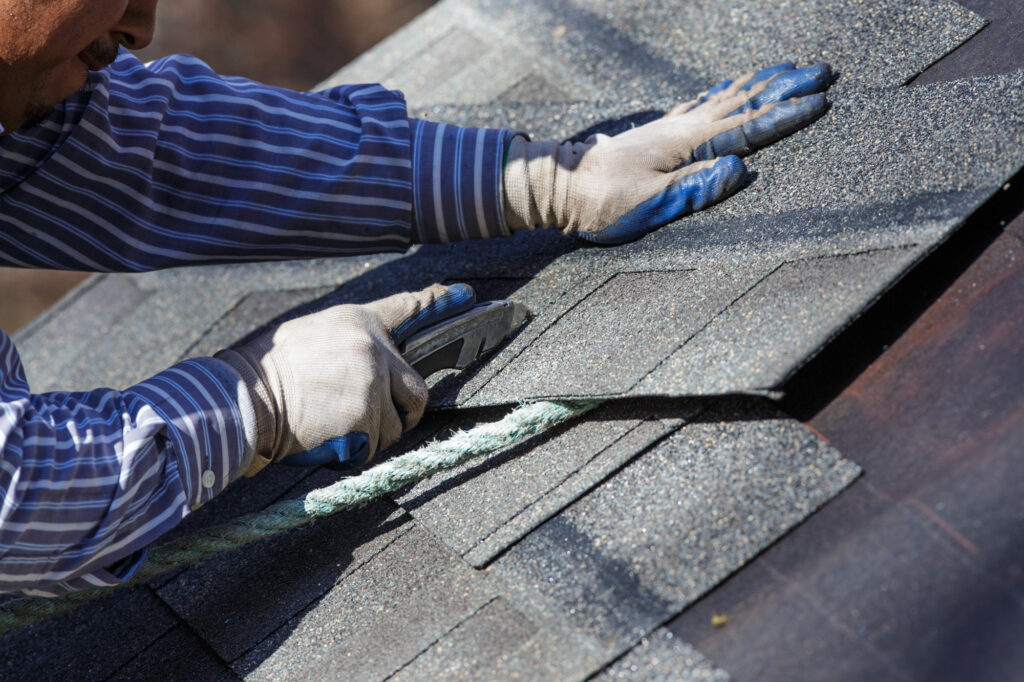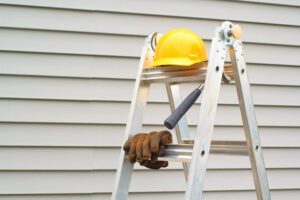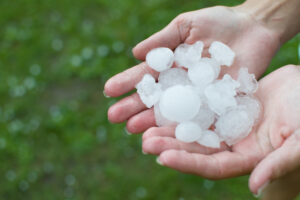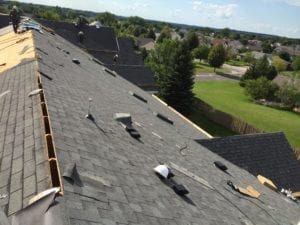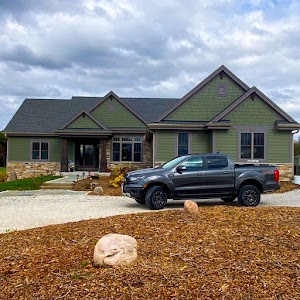Signs that your roof is suffering from heat damage include curling or buckling shingles, which may indicate potential leaks. Cracked or brittle shingles suggest a loss of flexibility, while granule loss exposes materials underneath, increasing the risk of deterioration. Blistering shingles signal trapped moisture issues, and discoloration often points to prolonged UV exposure. Warped shingles impair water shedding, and a sagging roof deck can signify compromised structural integrity. Regular inspections are essential to identify these issues early. By recognizing these warning signs, you can take proactive measures to protect your roof. More insights on prevention and maintenance await your exploration.
How Can Heat Damage Your Roof?
Although roofs are designed to withstand various environmental conditions, excessive heat can considerably compromise their integrity.
Heat damage manifests through curling, cracking, and blistering of roofing materials due to prolonged exposure to high temperatures.
A proper ventilation system is essential to mitigate trapped moisture and heat buildup, preventing structural issues and extending the roof’s lifespan by maintaining ideal temperature levels.
9 Key Signs of Heat Damage on Your Roof
Identifying key signs of heat damage on your roof is essential for maintaining its integrity and longevity.
Look for curling or buckling shingles, cracked or brittle surfaces, and granule loss, which can expose underlying materials to further deterioration.
Moreover, blistering and discoloration are clear indicators that your roof is suffering from excessive heat exposure and requires immediate attention.
Curling or Buckling Shingles
A significant indicator of heat damage on your roof is the presence of curling or buckling shingles. This deformation compromises the shingles’ ability to shed water, increasing vulnerability to leaks.
Homeowners should be vigilant for:
- Lifting edges of asphalt shingles
- Loss of flexibility and increased brittleness
- Detracted aesthetic appeal
- Need for professional inspection and maintenance
Addressing these signs early can prevent further structural damage.
Cracked or Brittle Shingles
Prolonged exposure to high temperatures can lead to cracked or brittle shingles, greatly undermining your roof’s integrity.
Heat damage causes asphalt to lose flexibility, resulting in visible cracks that may appear as straight or jagged lines. As shingles dry out, they may warp or split, increasing vulnerability to leaks.
Regular inspections are essential to identify cracked shingles before they escalate into costly repairs.
Granule Loss & Bald Spots
Cracked and brittle shingles often signal the onset of more serious roof issues, one of which is granule loss. This phenomenon leads to bald spots, exposing the underlying asphalt and accelerating roof damage.
- Increased UV exposure
- Higher temperatures causing further deterioration
- Risk of leaks and structural degradation
- Necessity for regular inspections
Monitoring granule loss is essential for maintaining your roof’s integrity and longevity.
Blistering or Bubbling Shingle
Blistering or bubbling shingles are clear indicators of heat damage that can greatly impact your roof’s performance.
This phenomenon occurs when heat softens the asphalt, causing trapped moisture to vaporize and form raised spots.
If left unaddressed, these blisters can break open, leading to leaks and further deterioration.
Regular inspections are essential to catch blistering early and prevent costly repairs.
Discoloration or Fading
One of the most telling signs of heat damage on your roof is the discoloration or fading of roofing materials. This is especially evident in asphalt shingles, which may shift to darker shades as they weaken.
- Indicates prolonged UV exposure
- May signal granule loss
- Affects aesthetic appeal
- Can reveal underlying structural issues
Regular monitoring can help detect these critical changes early.
Warped or Distorted Shingles
Warped or distorted shingles are crucial indicators of heat damage on your roof, often resulting from prolonged exposure to extreme temperatures.
This thermal expansion stresses the shingles, causing them to buckle and creating an uneven surface. Such distortion compromises the roof’s ability to shed water, increasing leak risks.
Early detection of warped or distorted shingles is essential to prevent further damage and costly repairs.
Nail Pop-Ups
As temperatures rise, the expansion and contraction of roofing materials can lead to a common issue known as nail pop-ups, which pose a significant risk to the integrity of your roof.
Key indicators of nail pop-ups due to heat damage include:
- Protruding nail heads
- Gaps in shingles
- Water infiltration signs
- Increased risk of leaks
Addressing these issues promptly guarantees the longevity of your roofing system.
Sagging Roof Deck
When heat exposure persists over time, it can lead to a sagging roof deck, a critical sign that the structural integrity of your roof is at risk.
Heat damage weakens materials, causing them to warp and fail in supporting the roof’s weight.
Furthermore, water pooling in these sagging areas can worsen the situation, increasing the potential for leaks and further structural deterioration.
Regular inspections are essential.
Increased Energy Bills
Homeowners may be surprised to find that increased energy bills can serve as a key indicator of heat damage on their roofs.
Compromised insulation and ventilation lead to higher cooling costs.
- Loss of reflective properties in roofing materials
- Gaps and leaks from deteriorated shingles
- More frequent HVAC usage during hot months
- Regular inspections to identify early signs of heat damage
Addressing these issues promptly is essential.
How to Prevent Heat Damage to Your Roof
To effectively prevent heat damage to your roof, it is essential to contemplate several key strategies.
Selecting heat-resistant materials, enhancing attic ventilation, and scheduling regular inspections can greatly reduce the risk of damage.
Implementing these measures will help maintain your roof’s integrity and extend its lifespan.
Choose Heat-Resistant Materials
Selecting heat-resistant materials for your roof is essential in safeguarding against heat damage.
These materials not only enhance durability but also reduce maintenance needs.
Consider the following options:
- Reflective asphalt shingles to minimize heat absorption
- Metal roofing for sunlight reflection
- Clay or concrete tiles for excellent thermal performance
- Flat roofing materials with reflective surfaces to mitigate thermal expansion
Investing in these choices can guarantee your roof’s longevity.
Improve Attic Ventilation
Improving attic ventilation plays an essential role in protecting your roof from heat damage, complementing the benefits of heat-resistant materials.
Proper ventilation allows hot air to escape and cooler air to enter, preventing heat buildup that can exceed 150°F.
Installing intake and exhaust vents promotes airflow, reduces attic temperatures, and helps maintain your roof’s integrity, ultimately extending its lifespan.
Schedule Regular Inspections
How can homeowners effectively safeguard their roofs against heat damage? Scheduling regular roof inspections at least once a year is essential.
These assessments help identify early signs of damage, ensuring timely repairs and extending roof lifespan.
- Detect curling, cracking, or discoloration
- Identify structural changes like sagging
- Uncover hidden issues before escalation
- Document damage for insurance claims
Need Help Protecting Your Roof from Heat Damage?
As heat waves become more prevalent, ensuring your roof remains protected from heat damage is essential for maintaining its integrity and longevity.
Implementing proper roof ventilation systems facilitates airflow, reducing heat buildup. Regular inspections can identify early signs of damage, while investing in heat-resistant materials further safeguards your roof.
Furthermore, keeping gutters clear prevents moisture retention, mitigating potential heat damage risks.

